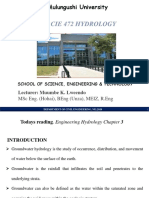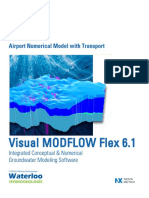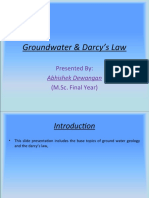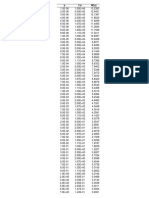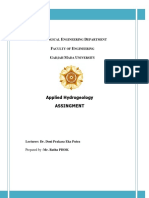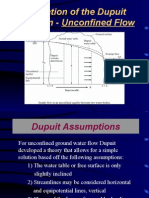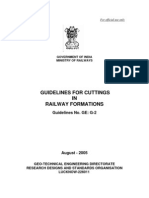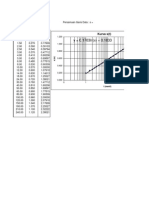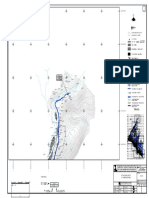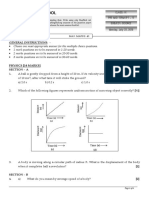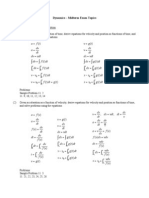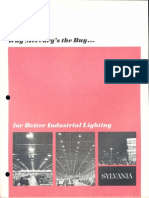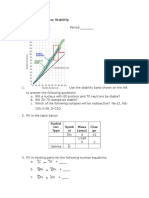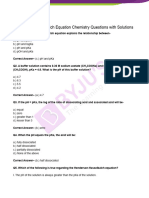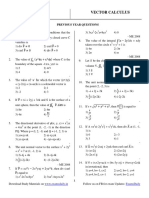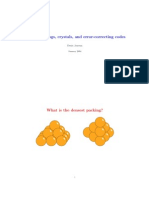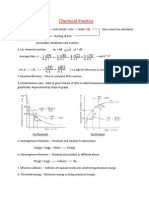100% found this document useful (1 vote)
350 views25 pagesApplication of Groundwater Flow
- Darcy's law establishes that groundwater flow occurs due to hydraulic gradients between areas of high and low hydraulic head. Groundwater flow velocity is proportional to hydraulic conductivity and the head loss over a given length.
- Hydraulic conductivity depends on properties of both the fluid and porous media, and is a measure of how easily water can flow through the subsurface.
- The groundwater flow equation is a partial differential equation that can be solved to determine hydraulic head distribution over space and time in aquifers. Simplified forms exist for steady-state and homogeneous/isotropic conditions.
- Flow nets can be used to graphically solve the groundwater flow equation under steady-state conditions, providing flow rates
Uploaded by
fujiCopyright
© © All Rights Reserved
We take content rights seriously. If you suspect this is your content, claim it here.
Available Formats
Download as PPTX, PDF, TXT or read online on Scribd
100% found this document useful (1 vote)
350 views25 pagesApplication of Groundwater Flow
- Darcy's law establishes that groundwater flow occurs due to hydraulic gradients between areas of high and low hydraulic head. Groundwater flow velocity is proportional to hydraulic conductivity and the head loss over a given length.
- Hydraulic conductivity depends on properties of both the fluid and porous media, and is a measure of how easily water can flow through the subsurface.
- The groundwater flow equation is a partial differential equation that can be solved to determine hydraulic head distribution over space and time in aquifers. Simplified forms exist for steady-state and homogeneous/isotropic conditions.
- Flow nets can be used to graphically solve the groundwater flow equation under steady-state conditions, providing flow rates
Uploaded by
fujiCopyright
© © All Rights Reserved
We take content rights seriously. If you suspect this is your content, claim it here.
Available Formats
Download as PPTX, PDF, TXT or read online on Scribd
/ 25








